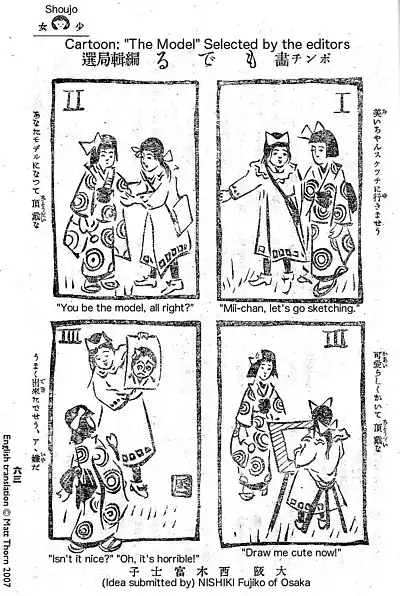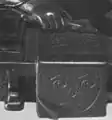
Henohenomoheji (Japanese: へのへのもへじ HEH-noh-HEH-noh-moh-HEH-jee) or hehenonomoheji (へへののもへじ) is a face known to be drawn by Japanese schoolchildren using hiragana characters.[1] It became a popular drawing during the Edo period.[2]
Composition
The word breaks down into seven hiragana characters: he (へ), no (の), he (へ), no (の), mo (も), he (へ), and ji (じ). The first two he are the eyebrows, the two no are the eyes, the mo is a nose, and the last he is the mouth. The outline of the face is made by the character ji, its two short strokes (dakuten) forming the ear or cheek.
Henohenomoheji is often used to symbolize a nondescript or generic human face, such as the faces of kakashi (scarecrows)[1] and teru teru bōzu. The characters are often sung as they are drawn, making the henohenomoheji an egaki uta (絵描き歌, drawing song).[2]
Gallery
See also
References
- 1 2 "Let's Learn Hiragana with Japanese Culture: Henohenomoheji". Japanese.about.com. Archived from the original on 2014-08-28. Retrieved 2009-08-11.
- 1 2 Natsue, Washizu (1997). わらべうたとナーサリー・ライム (in Japanese). Banseisha. p. 28. ISBN 9784891882709.
External links
- Henohenomoheji variations at the Wayback Machine (archived May 6, 2015) (in Japanese)


.jpg.webp)

